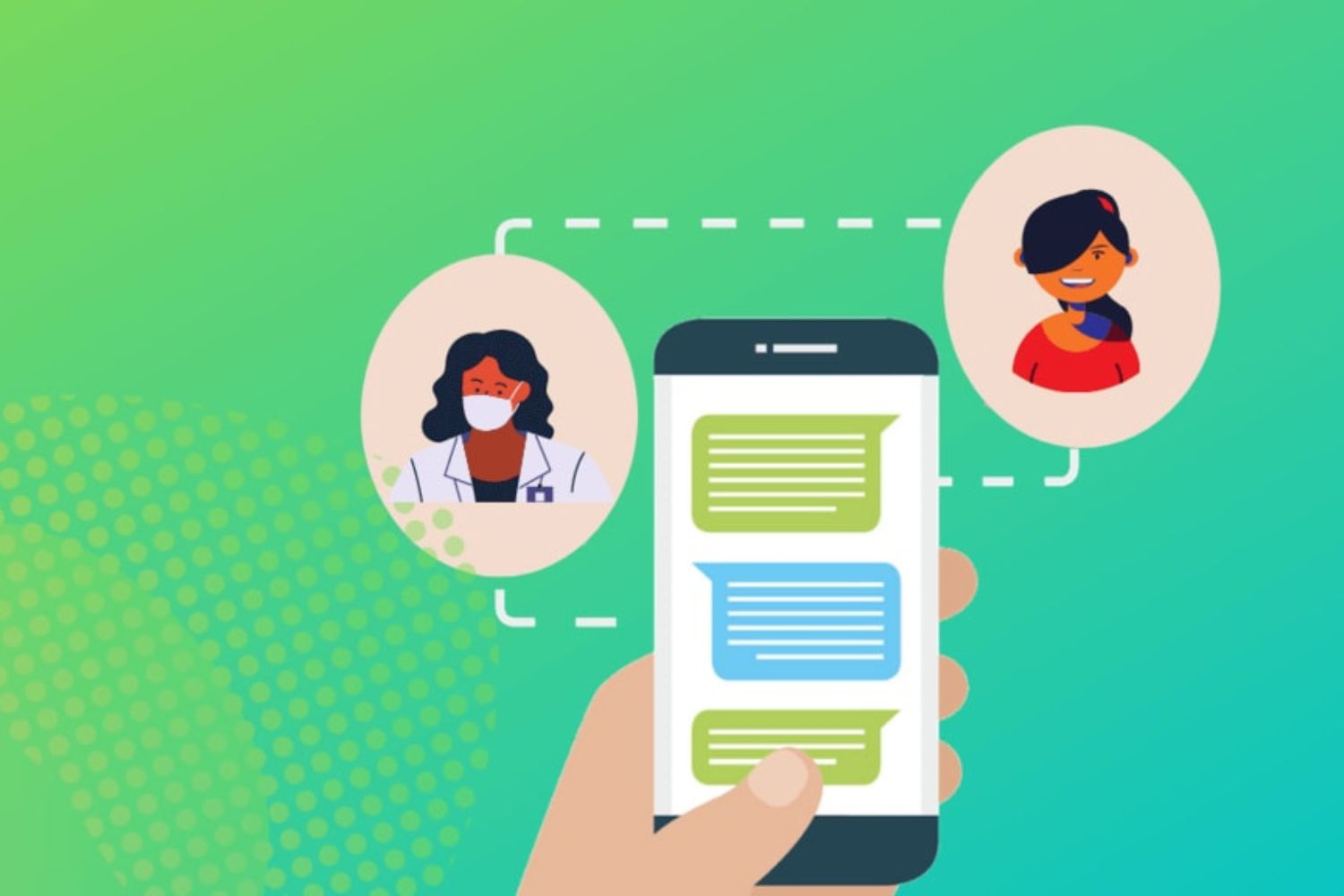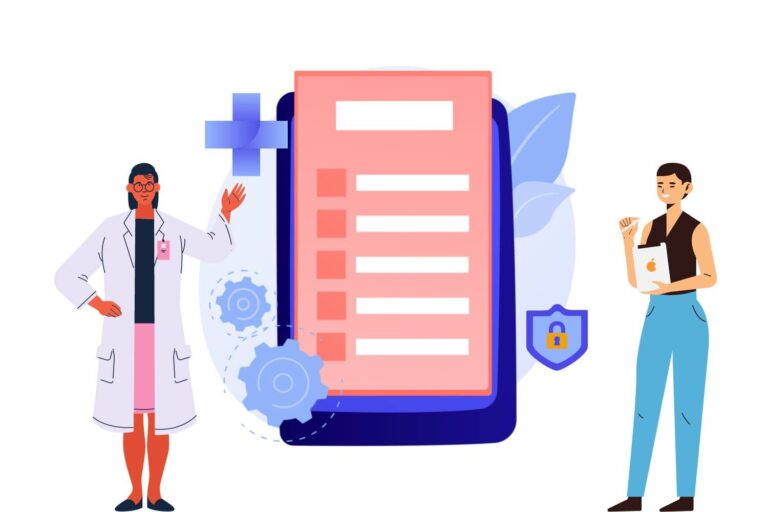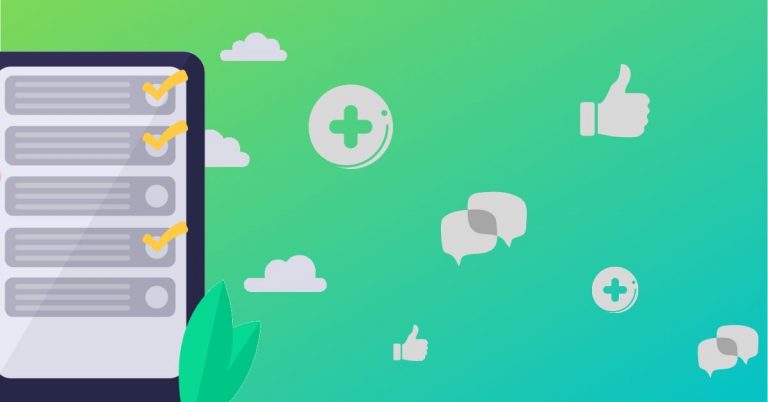5 Ways to Use Text Messaging to Boost Practice Efficiency
Your front office staff attends to the long line of patients. The phone rings. The staff answers the inquiry on call and gets back to check-in the next person. The phone rings. The staff gets interrupted, responds to the call, and moves on to the patient in front of him. The phone rings. The patients are exasperated, and your staff is drained. And yet, the phone continues to ring.
Doesn’t this situation seem all too familiar? Most front office staff constantly juggles between answering incessant phone calls and focusing on their duties – right from managing patient inflow to coordinating patient engagement activities.
Now, what if you can streamline the check-in process, increase patient participation, and minimize staff burnout through automated text messages?
The power of text messaging
Text messages have become so commonplace that we almost always overlook its power to reach a large audience with targeted, personalized communication.
Let’s lay out some interesting facts:
- More opportunities to connect: Text messages have a whopping 98% open rate. 90% of the text messages are read within 3 minutes, according to a report from MobileSquared.
- Better engagement: It takes only 90 seconds for a person to respond to an SMS, while an email response takes 90 minutes1. Also, SMS can garner a 209% higher response rate than other communication channels such as phone, email, or social media2.
- Preferred channel: Based on FICO’s global survey, 80% of people would like to use their smartphones to interact with health care providers.
Leveraging text messaging for your practice
Today, overwhelmed health systems are witnessing a limited availability of resources and time, which directly impacts care delivery and patient experience. Automated text messaging helps your practice minimize manual efforts, close patient communication gaps, and find patient outreach opportunities.
Here are five ways you can adopt the text messaging channel for your practice:
1. Self-service and automated workflows
Text messaging can eliminate both long lines and staff fatigue with automated check-in workflows. Now, how does this work? Here’s a quick example:
Let’s say Jason has an appointment at your practice. Your front office triggers automated check-in links to your patients via text messages. Using the link, Jason completes his check-in process and makes the payment days before his appointment. On the day of the appointment, he arrives at your practice and quickly proceeds to access his care services. This way, your front office staff can direct Jason to the physician’s office and quickly proceed to the next patient without spending much time and effort on each check-in. Similarly, if your staff wants Jason to complete additional forms, they can leverage text messaging to send the link to these forms right away.
Automated intake workflows enabled by text messaging shift your staff’s workload and make it easy for your practice to provide convenience and better care delivery.
2. Minimize appointment no-shows
No-shows are a massive revenue-drainer for every practice. Frankly, it can be quite frustrating after all the effort it takes to plan a single appointment. With 81% of no-shows happening because patients either forgot or noted the time incorrectly, appointment reminders become a must.
Traditionally, phone calls are a common channel to ensure that patients don’t miss their appointments. But, today, according to Macomber, 84 percent of customers don’t even pick up calls from unknown callers. Add to this the effort and time your staff has to invest in calling each patient individually, and phone call reminders don’t seem like a viable option anymore.
On the other hand, appointment reminders via text is a proven strategy to minimize no-show rates by almost 40%3. Use automated appointment reminders to send related information and ensure your patients arrive for their appointments with just a fraction of your staff’s efforts.
3. Boost revenue collection
“Bad debt is the pain hospitals can’t heal as patients don’t pay”, wrote Bloomberg back in 2016 – This statement holds even today as bad debts continue to hurt the health care system. Payment reminders ensure your patients know how much they owe and how to pay, and increases revenue collection. But, manually sending out payment reminders is no easy task. Prior to digitization, the billing departments or collection agencies devote hours of paperwork to prepare statements and mail them to patients. The cost of paper, postage, and collection agency charges eats further into your revenue.
Payment reminders via emails and text messaging help eliminate these inefficiencies. However, when it comes to email, the chances of emails falling into the spam folder or not getting read is very high. Quite simply, there is always too much clutter in the inbox to distract the recipient.
With a 98% open rate, payment reminders via text messaging ensure higher deliverability and attention. And what’s more, your practice can save time and effort by automating the whole process.
4. Improve patient-provider communication
From addressing patient concerns to offering post-treatment instructions, the need for one-to-one communication is one too many. However, phone calls can prove to be quite strenuous in such situations. And what’s a bigger risk? Addressing patient queries and discussing their health-related information over a telephone call in a busy front office increases your chances of inadvertently violating HIPAA rules.
Text messaging is a secure way to manage one-to-one communication with your patients to help address their queries. Importantly, text messaging is a great way to establish patient-provider relationships beyond the practice, leading to increased recare patients and better overall engagement.
5. Engage patients with relevant information
What would your practice ideally do to distribute general, time-sensitive information to a large group of individuals? If your preferred channel is telephone calls, then the amount of stress your front office will endure is unimaginable.
Automated text messaging is the quickest channel to circulate broadcast information when the need arises. With its reliability and better open rates to bank on, you can leverage text-based broadcast messaging to:
- Inform patients about the unavailability of provider, holidays, or shutdown due to weather conditions
- Share health and wellness tips
- Persuade patients to take up preventive and elective health care services
- Provide information about critical diseases, common symptoms, and preventive strategies (for instance, COVID-19 and influenza)
- Promote upcoming events such as vaccination programs, COVID-19 screening, and more
Every channel has its pros and cons, and text messaging is no different. To give you a complete perspective of the communication channel, here are some of the downsides of adopting text messaging for the use cases we have covered above.
Firstly, there is a character limit for your text messages. You may find it challenging to convey your information within limited characters. And at times, as a result of keeping your message short, the overall tone may sound curt. So, the tricky part is to carefully create a short, courteous message that puts your point across clearly.
Another flip side is the cost. Unlike emails, you will incur a cost proportionate to the volume of messages that you send.
The bottom lineIrrespective of its downsides, there’s no denying that text messaging stands as a true winner in terms of reach, response rate, and reliability. With practices focused on delivering better care and patient experience using limited resources, automated text messaging can be the deciding factor for your practice’s efficiency, patient satisfaction, and financial success.
To know more about how your practice can automate your workflows and adopt text messaging for the areas mentioned above, contact us.
Sources:
- https://www.gsma.com/futurenetworks/digest/rcs-b2c-campaigns/
- https://www.franchisehelp.com/franchise-lead-generation/more-evidence-that-text-messaging-is-eating-phone-calls-lunch/
- https://bmcophthalmol.biomedcentral.com/articles/10.1186/1471-2415-8-9







